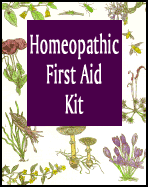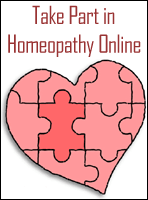Homeopathy is an alternative system of medicine that was founded in the early 19th century by a German physician, Dr. Hahnemann 200 years ago.
Classical Homeopathy rests on three principles: the law of similars, the single medicine, and the minimum dose. The law of similars states that a disease is cured by a medicine which creates symptoms similar to those the patient is experiencing in a healthy person. Hence an important part of the prescription of a Homeopathic medicine is a lengthy interview to determine all the symptoms the patient is experiencing. The Homeopathic physician then determines which medicine best matches the symptoms that the patient is experiencing and prescribes it.
Let's look at an example: If your child accidentally ingests certain poisons, you may be advised to administer Syrup of Ipecac to induce vomiting. Ipecac is derived from the root of a South American plant called Ipecacuanha. The name, in the native language, means "the plant by the road which makes you throw up." Eating the plant causes vomiting.
Such an experiment, using healthy volunteers, is called a proving, and it is the Homeopath's source of information about the action of a drug.
Of what use could this plant be? If a person were suffering from a gagging cough after a cold, or a woman were experiencing morning sickness with incessant nausea that is not relieved by vomiting, then Ipecacuanha, administered in a minute dose, especially prepared by a Homeopathic pharmacy in accordance with FDA approved guidelines, can allay the "similar" suffering.
When a group of healthy volunteers took this substance to determine the effects of this drug, they found that the drug induced other symptoms as well. The mouth retained much saliva. The tongue was very clean. There was a cough so severe that it led to gagging and vomiting. There was incessant nausea. While it is expected that vomiting would usually relieve the nausea, this was not the case.
Samuel Hahnemann described this principle by using a Latin phrase: Similia Similibus Curentur, which translates: "Let likes cure likes." It is a principle that has been known for centuries. Hahnemann developed the principle into a system of medicine called Homeopathy, and it has been used successfully for the last 200 years.
The principle of the single remedy states that a single medicine should cover all the symptoms the patient is experiencing: mental, emotional, and physical. A classical Homeopath would not prescribe one medicine for a headache and another for an upset stomach, he or she would find a single medicine that covered both symptoms.
The principle of the minimum dose has two parts. First the Homeopathic physician only prescribes a small number of doses of the Homeopathic medicine and waits to see what effect the medicine has. Second, the medicine is given in an infinitesimal dose. Homeopaths have discovered that the effect of Homeopathic medicines is strengthen upon successive dilutions as long as the medicine is violently shaken between each dilution. Medicines are typically used in very high dilutions such as 30C (1 part in 10^-60) or 200C (1 part in 10^-400).
It is the use of infinitesimal doses that is the most controversial aspect of Homeopathy and the reason why most conventional doctors claim it functions only as a placebo. However, a number of controlled studies have been performed which show the effectiveness of Homeopathic medicine in treating a number of diseases. The best summary of this research is a study published in the British Medical Journal. The authors of this study are not Homeopaths but medical school professors asked by the Dutch government to review the existing research. P>If you suffer from a chronic health problem, you should be aware that Homeopathic treatment will take time and patience. You should be prepared to commit to six months or more of treatment before the problem is resolved. Also, a Homeopathic doctor may suggest changes to diet and lifestyle as part of the treatment. If you are unable to commit to this, you should consider another form of medical practice. |


